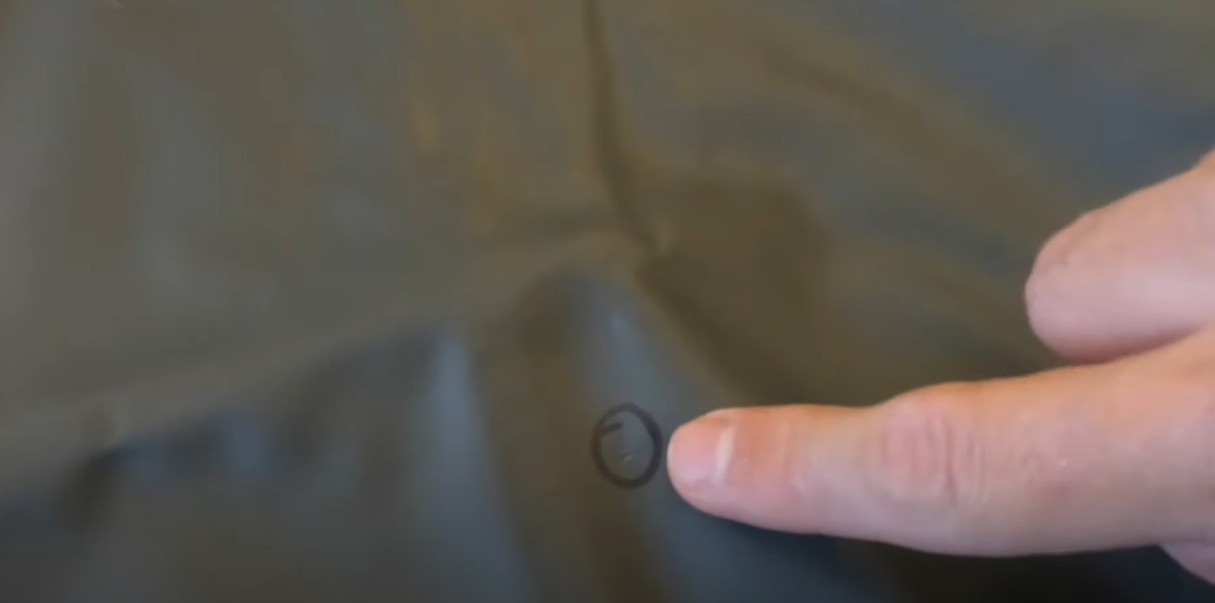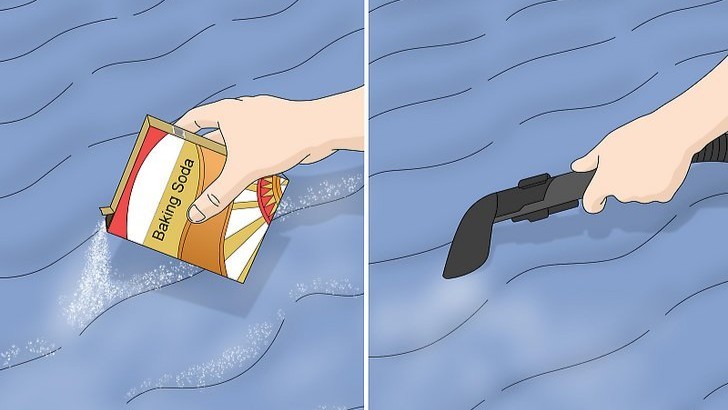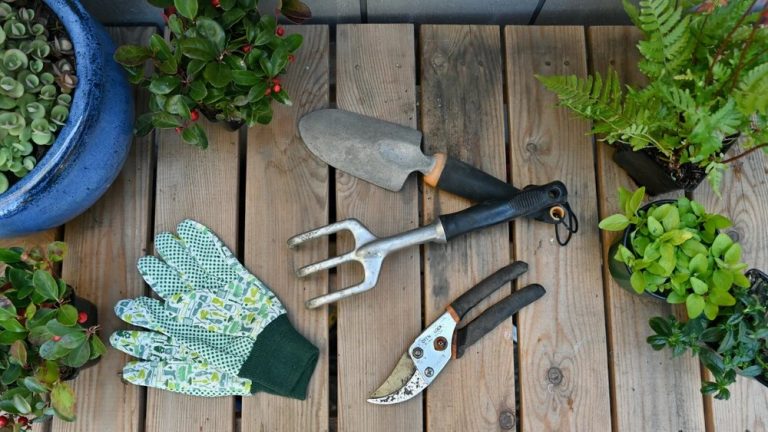How to Find a Hole in an Air Mattress?
 Waking up from sleeping on a sagging air mattress is like sleeping on a sad, deflated balloon. You roll over, and your face feels too close to the ground. Is it in your head? No, it actually happens. Now you’re wondering—how do you look for a hole in an air mattress? Don’t panic. It’s simpler than it seems.
Waking up from sleeping on a sagging air mattress is like sleeping on a sad, deflated balloon. You roll over, and your face feels too close to the ground. Is it in your head? No, it actually happens. Now you’re wondering—how do you look for a hole in an air mattress? Don’t panic. It’s simpler than it seems.
It takes some patience and simple tools, and you’ll be sleeping soundly in no time. Let’s go through it together step by step, as if we’re fixing this.
Why is your air mattress leaking air?
Air mattresses lose air for other reasons besides a hole. Cold air causes the air within to shrink. Your body weight stretches the material a bit. The valve might be the culprit if it is loose. Yet, if your mattress loses air quickly—overnight, say—then there probably is a puncture. Small holes are hard to find but not impossible. This knowledge keeps you relaxed and grounded.
Step 1: Fill It Up Completely
So, first, fill up your air mattress to a really firm state. Not sort of full—firm. The pressure will push air out of any hole, making it simpler to find. Set it on a clean, flat surface so that you don’t make new holes. We once skipped this step and spent hours trying to find a leak that wasn’t even there. We found that a full mattress is really important in this case.
Step 2: Listen Carefully Like a Detective
Get into a quiet room. Switch off fans, quiet your phone, and quieten distractions. Press down gently on the mattress, section by section. Listen for a slight hiss, a gentle whistle. Inspect seams and the valve first—they’re likely leak points. You may feel a puff of air on your cheek. It’s a game of hide-and-seek with an elusive breeze.
 Step 3: The Soapy Water Trick
Step 3: The Soapy Water Trick
It’s a science experiment—and it works effectively. You’ll need dish soap, water, and a spray bottle or a sponge. Mix some soap with water to make bubbles. Spray it or wipe it on the mattress. Watch bubbles develop. They mean air is leaking out. Finding that bubble area is nearly as enjoyable as bursting bubble wrap. We guarantee you’ll smile.
Step 4: Submerge Small Mattresses (Carefully)
Do you have a small air mattress? You can try the submersion trick. Fill a bathtub with water and dip one part at a time. Look for small bubbles coming up. Make sure the valve is closed tightly. This trick only works for vinyl or waterproof models—foam or fabric ones will be damaged. We once tried this with a camping mattress. We found the hole in a few minutes.
Step 5: Mark the hole immediately.
As soon as you see the leak, mark it right away. You can use a pen, a marker, or a piece of masking tape. Small holes are sneaky—they vanish if you blink. We lost a hole once after finding it and had to begin again. Don’t make the mistake We did. A quick mark saves time and aggravation.
Step 6: Patch It Like a Pro
Dry the wet spot thoroughly. Wait 5 to 10 minutes to ensure so. Apply the patch kit provided with your mattress or purchase a universal vinyl repair kit. Clean the area, apply the glue, press the patch on, and allow it to sit for hours—follow the kit’s instructions. Don’t be in a rush to inflate it again. With a good bond, there are no more leaks.
If Leak Is Hidden, Look in These Locations
Others are hard to find. Check seams carefully, especially corners where pressure builds up. Check the valve—rotate it and check the cap. Don’t neglect to check the bottom; it’s easy to miss. If you have a pump enclosed in your mattress, check the hose and nozzle for cracks. These areas can stump the pros on occasion.
Air Mattress Brands
Air mattresses come in all shapes and sizes, but the brand you choose can make or break your experience. Some brands are great for camping, others for guest bedrooms, but they all have to deal with the same problem: leaks. Knowing how to find a hole in an air mattress is crucial, and each brand has its own quirks that affect leak detection and repair. Based on professional testing and user we’ve reviewed the best air mattresses in-depth, here’s a rundown of top brands—Intex, SoundAsleep, and King Koil—and their advantages, disadvantages, and tips on fixing them.
however. To decide how to find a hole in an air mattress like King Koil’s, check the pillow-top first—it’s thick and can hide leaks. The longevity of this brand makes it an investment in the long run for individuals who prioritize comfort.
Other Ways of Fixing Obstinate Leaks
Still having no luck? Try these:
Baby Powder: Apply a little on the surface. Moving air causes the powder to shift, revealing the hole. Works well for dry spots.
Flashlight: Hold it at an angle over the mattress and shine it. Small holes will occasionally reflect light.
Quadrant Method: Split the mattress into four quadrants. Attempt one quadrant at a time to simplify the task.
If you think there might be a valve leak, apply soapy water to the base and stem. If bubbles form, it is the valve and not a puncture. Replace or tighten it—most makers have spare parts.
How to Prevent Leaks Before They Happen
Prevention is easier than repair. Do not overinflate; it strains seams. Keep zippers and claws away—sharp items are a nuisance. Put a tarp or blanket underneath the mattress, particularly outdoors. Store it dry, deflated, and out of the sun. Treat your mattress nicely like a friend, and it will last for years.
Why This Matters
A deflated air bed is not just annoying—it steals your sleep. Camping, overnights, or crashing at friends’, a deflated bed ruins the mood. But finding a hole does not need fancy tools. From listening for hisses to looking for bubbles, these steps are easy and fast. You only need the right approach for your circumstance.
Brand Insights: Their Point of Differentiation
Intex dominates the budget category with low-cost and plain designs. Their thin vinyl is functional but needs to be used with care. SoundAsleep prioritizes comfort with soft tops, which are perfect for domestic use, but leaks are hard to detect. Coleman excels outdoors, with sturdy constructions but occasionally valve issues. Every brand compromises on price, durability, and ease of repair. Select according to what you require—camping, visitors, or extended use.
Ready to Fix That Leak?
You’ve got the stuff and the smarts to find that annoying hole. Get your soap, sponge, and a dash of patience. You’re now ready to patch up your air mattress and sleep well. Got a tip that did the trick for you? Or a preferred brand? Tell your story—We’d love to hear it. Let’s keep sleeping well, one patch at a time!
 Step 3: The Soapy Water Trick
Step 3: The Soapy Water Trick







